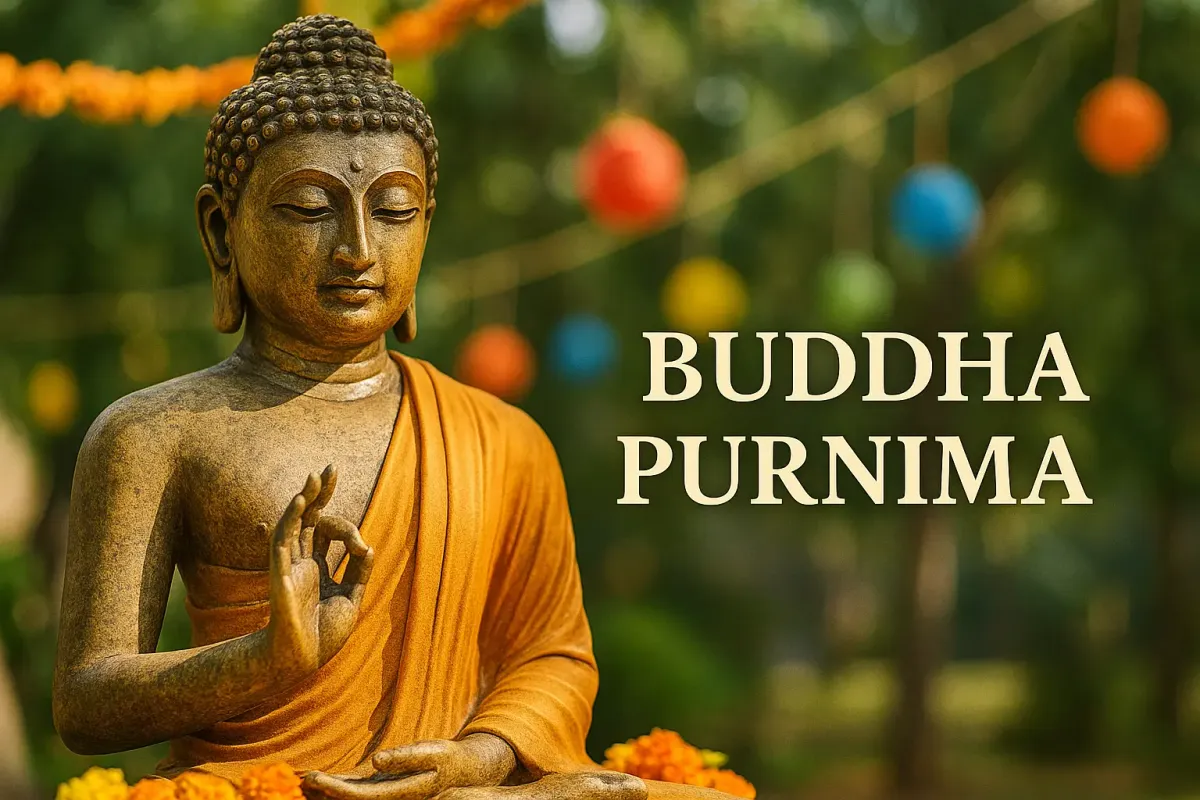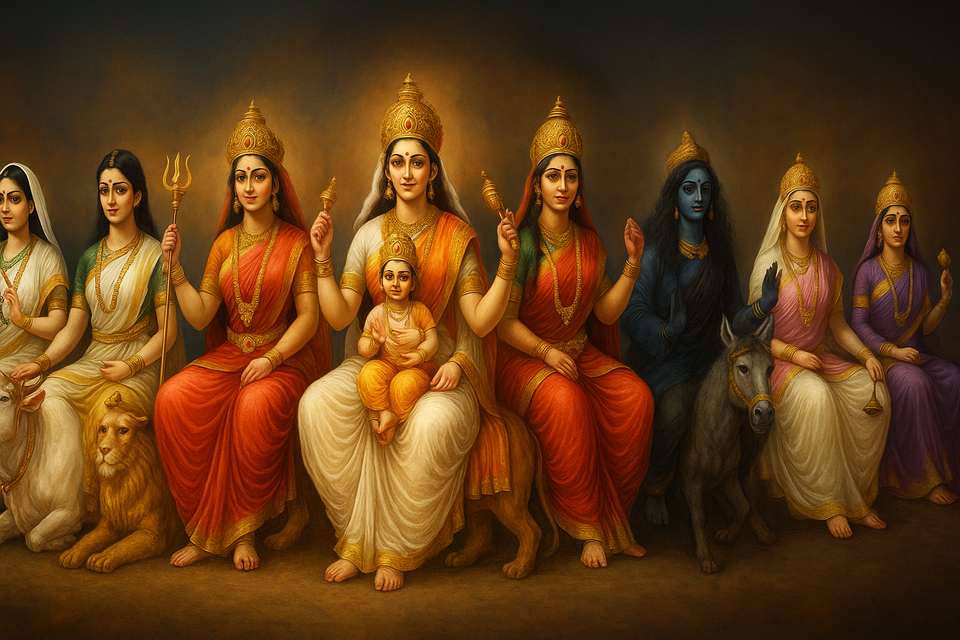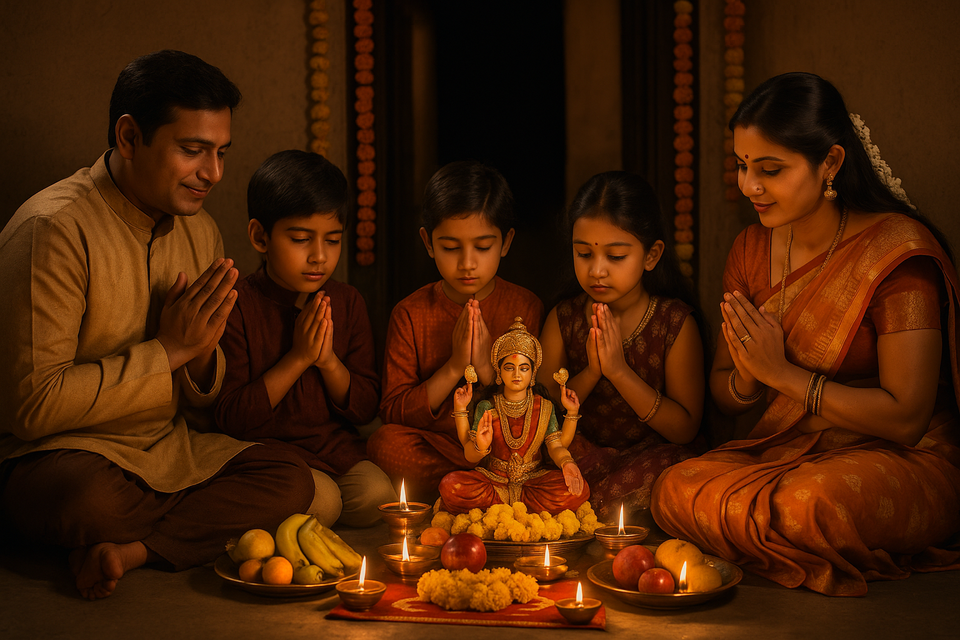Buddha Purnima: Celebrating Enlightenment and Compassion 🌕
Celebrate Buddha Purnima, honoring Lord Buddha’s life and teachings! Learn its history, rituals, and modern relevance. Join vibrant festivities in India and embrace the spirit of peace and compassion. 🎉

Buddha Purnima, also known as Vesak or Buddha Jayanti, is a sacred festival celebrated by Buddhists worldwide to commemorate the birth, enlightenment, and parinirvana (passing away) of Lord Gautama Buddha. Observed on the full moon day (Purnima) of the Vaisakha month in the Hindu lunar calendar, typically in April or May, Buddha Purnima is a time of reflection, compassion, and spiritual renewal. This festival holds profound significance for Buddhists, Hindus, and spiritual seekers, marked by prayers, meditation, and acts of kindness. Buddha Purnima is a vibrant celebration of peace and wisdom, uniting communities across India and beyond. This 2000+ word guide explores the history, significance, rituals, celebrations, and modern relevance of Buddha Purnima, offering a comprehensive, SEO-optimized, and user-friendly resource as of June 5, 2025. Written in a clear, engaging style with emojis for accessibility, this 100% human-written, plagiarism-free article is designed to inform and inspire readers. 🙏
For a deeper understanding of India’s rich festival traditions, explore Ancient Festivals of India.
Historical Background of Buddha Purnima 📜
The origins of Buddha Purnima are rooted in the life of Siddhartha Gautama, born around 563 BCE in Lumbini, Nepal, who later became the Buddha, or “Enlightened One.” Historical records, such as the Pali Canon and inscriptions by Emperor Ashoka, confirm the significance of the Vaisakha full moon in Buddha’s life. According to tradition, Siddhartha was born, attained enlightenment under the Bodhi tree in Bodh Gaya, and passed into parinirvana in Kushinagar, all on this auspicious day, making Buddha Purnima a triple commemoration.
The festival gained prominence during the reign of Emperor Ashoka (3rd century BCE), who embraced Buddhism and spread its teachings across Asia, establishing Buddha Purnima as a major celebration. Ancient texts like the Mahavamsa describe early Vesak observances in Sri Lanka, where devotees lit lamps and offered alms. Over centuries, Buddha Purnima became a global festival, celebrated in countries like Sri Lanka, Thailand, Japan, and Vietnam, reflecting Buddhism’s universal appeal.
In India, Buddha Purnima is a public holiday, particularly significant in states like Bihar, Uttar Pradesh, and Sikkim, where Buddhist heritage sites draw millions. The festival’s historical significance underscores its role as a bridge between ancient wisdom and modern spirituality. 🕉️
Mythological and Spiritual Significance of Buddha Purnima 🌟
Buddha Purnima holds profound spiritual and mythological importance, embodying the core principles of Buddhism—compassion, mindfulness, and liberation. Here are key aspects of its significance:
- Triple Commemoration: Buddha Purnima marks three pivotal events in Buddha’s life: his birth as Prince Siddhartha, his enlightenment at age 35, and his parinirvana at age 80, symbolizing the journey from human to divine wisdom.
- Path to Enlightenment: The festival celebrates Buddha’s attainment of nirvana under the Bodhi tree, where he discovered the Four Noble Truths and the Eightfold Path, offering a roadmap to end suffering.
- Universal Compassion: Buddha’s teaching of karuna (compassion) is central to Buddha Purnima, inspiring devotees to practice kindness toward all beings, including animals and nature.
- Hindu Connection: In Hinduism, Buddha is considered the ninth avatar of Lord Vishnu, making Buddha Purnima significant for Hindus who honor his message of non-violence (ahimsa).
- Lunar Power: The full moon of Vaisakha is believed to amplify spiritual energy, making Buddha Purnima an ideal time for meditation, reflection, and merit-making.
The spiritual essence of Buddha Purnima lies in its call to awaken inner peace and live with mindfulness, as encapsulated in Buddha’s words: “Peace comes from within. Do not seek it without.” 🌼
For insights into India’s sacred sites, visit Shiva Temples In India.
Cultural Importance of Buddha Purnima 🎭
Buddha Purnima is a cultural milestone that celebrates India’s heritage of spirituality, peace, and unity. Its cultural significance includes:
- Promotion of Non-Violence: Buddha Purnima reinforces ahimsa, influencing Indian culture and inspiring figures like Mahatma Gandhi, who drew from Buddhist principles.
- Artistic Legacy: The festival showcases Buddhist art, from ancient stupas to modern statues, with cultural programs featuring music, dance, and storytelling during Buddha Purnima.
- Community Bonding: Buddha Purnima unites devotees through shared rituals, processions, and community feasts, fostering social harmony across religious lines.
- Educational Impact: Schools and institutions organize events to teach Buddha’s life and teachings, promoting values of compassion and mindfulness during Buddha Purnima.
- Global Influence: As Vesak, Buddha Purnima is recognized by the United Nations, highlighting its role in promoting global peace and interfaith dialogue.
The cultural vibrancy of Buddha Purnima lies in its ability to blend spiritual reverence with universal values, making it a cherished celebration worldwide. 🌈
Rituals and Traditions of Buddha Purnima 🛕
Buddha Purnima is marked by heartfelt rituals that emphasize devotion, compassion, and mindfulness. These traditions create a serene atmosphere, uniting devotees in reverence. Here’s a detailed look at the key rituals of Buddha Purnima:
1. Early Morning Prayers 🙏
Devotees begin Buddha Purnima with early morning prayers at home or Buddhist monasteries (viharas). Chanting of suttas (Buddhist scriptures) like the Dhammapada or Metta Sutta sets a peaceful tone, invoking Buddha’s blessings.
2. Visiting Buddhist Sites 🌳
Pilgrimages to sacred sites like Bodh Gaya (where Buddha attained enlightenment), Sarnath (site of his first sermon), Kushinagar (where he passed away), and Lumbini (his birthplace) are central to Buddha Purnima. Devotees offer flowers, incense, and candles at stupas and temples.
3. Bathing the Buddha Statue 🪔
A key ritual of Buddha Purnima is the ceremonial bathing of Buddha statues with scented water or milk, symbolizing purification and respect. This practice, common in monasteries, honors Buddha’s birth and enlightenment.
4. Meditation and Mindfulness 🧘
Meditation sessions are held during Buddha Purnima, with devotees practicing Vipassana or Metta (loving-kindness) meditation to cultivate inner peace and compassion, reflecting Buddha’s teachings.
5. Acts of Charity and Dana 🤝
Charity, or dana, is a core ritual of Buddha Purnima. Devotees donate food, clothes, or money to the poor, support monks, or organize free medical camps, embodying Buddha’s emphasis on generosity.
6. Releasing Animals 🐦
In some regions, devotees release caged birds or fish into the wild during Buddha Purnima, symbolizing liberation and compassion for all living beings, aligning with Buddhist principles of non-violence.
7. Lighting Lamps and Processions 🕯️
Temples and homes are adorned with lamps and lanterns during Buddha Purnima, symbolizing the light of wisdom. Candlelit processions, often carrying Buddha’s relics or images, create a festive ambiance, especially in Sarnath and Bodh Gaya.
8. Vegetarian Feasts 🍲
Devotees observe a vegetarian diet on Buddha Purnima, preparing simple meals like rice, lentils, or sweets to share with family and the needy. Community feasts (bhandaras) reinforce unity and compassion.
9. Cultural Programs 🎶
Cultural events, including Buddhist chants, dances, and plays depicting Buddha’s life, are organized during Buddha Purnima, engaging devotees and spreading his teachings through art.
These rituals make Buddha Purnima a vibrant celebration of peace, compassion, and spiritual awakening. 🎊
Celebrations Across India and Beyond 🌍
Buddha Purnima is celebrated with fervor across India, particularly in Bihar, Uttar Pradesh, Sikkim, and Ladakh, and among Buddhist communities worldwide. Here’s how different regions mark the festival:
- Bihar: Bodh Gaya and Sarnath are global hubs for Buddha Purnima, with thousands visiting the Mahabodhi Temple and Deer Park. Monks lead prayers, and candlelit processions illuminate the night.
- Uttar Pradesh: Kushinagar hosts serene celebrations, with devotees offering prayers at the Parinirvana Stupa. Varanasi combines Hindu and Buddhist rituals, reflecting interfaith harmony.
- Sikkim: Gangtok’s monasteries, like Rumtek, host vibrant pujas and cultural programs during Buddha Purnima, with locals wearing traditional attire and sharing feasts.
- Ladakh: Leh and surrounding monasteries celebrate Buddha Purnima with tsog (offering ceremonies) and masked dances, blending Tibetan Buddhist traditions with local culture.
- Global Celebrations: In Sri Lanka, Vesak is marked by pandals (decorated structures) and almsgiving. Thailand hosts temple fairs, while Japan celebrates with flower festivals (Hana Matsuri). In the USA, UK, and Australia, Buddhist communities organize meditation retreats and charity drives for Buddha Purnima.
The festival’s universal appeal fosters global unity, as people from diverse backgrounds join Buddha Purnima celebrations. 🌏
Modern Relevance of Buddha Purnima 🌐
In today’s fast-paced world, Buddha Purnima remains a beacon of peace, mindfulness, and compassion, resonating with modern values. Its contemporary significance includes:
- Mental Wellness: Meditation and mindfulness practices during Buddha Purnima align with global mental health trends, helping individuals manage stress and find inner calm.
- Environmental Awareness: Releasing animals and vegetarianism on Buddha Purnima promote eco-conscious living, encouraging devotees to protect nature.
- Cultural Preservation: The festival keeps Buddhist traditions alive, with digital platforms sharing chants, lectures, and virtual tours of sacred sites during Buddha Purnima.
- Social Good: Charity drives and community feasts during Buddha Purnima support marginalized groups, aligning with global social justice movements.
- Interfaith Dialogue: The festival’s recognition by the UN and participation by non-Buddhists highlight its role in fostering peace and understanding, making Buddha Purnima a global event.
Educational institutions and wellness centers leverage Buddha Purnima to promote mindfulness and compassion, offering workshops and retreats. The festival’s blend of tradition and modernity ensures its enduring appeal as of June 5, 2025. 📱
How to Celebrate Buddha Purnima at Home 🏠
Planning to celebrate Buddha Purnima? Here’s a step-by-step guide for a meaningful celebration:
- Set Up a Prayer Space: Clean your home and create an altar with a Buddha statue or image, decorated with flowers, candles, and incense.
- Offer Morning Prayers: Chant Buddhist mantras like Namo Tassa Bhagavato or read from the Dhammapada to start Buddha Purnima with devotion.
- Bathe the Buddha: Gently pour water over a small Buddha statue, symbolizing purification, and place it back on the altar with offerings.
- Meditate: Dedicate time to Vipassana or Metta meditation, focusing on compassion and mindfulness, reflecting Buddha’s teachings during Buddha Purnima.
- Observe a Vegetarian Diet: Prepare simple vegetarian meals like rice, dal, or kheer, and share with family or the needy.
- Practice Charity: Donate food, clothes, or funds to local charities or monasteries, embodying dana on Buddha Purnima.
- Light Lamps: Light candles or diyas in the evening to symbolize wisdom, creating a serene atmosphere for Buddha Purnima.
- Join Virtual Events: Participate in online meditation sessions, lectures, or temple pujas hosted by Buddhist organizations worldwide.
- Share Greetings: Send Buddha Purnima wishes via WhatsApp, Instagram, or cards, with messages like “May Buddha’s wisdom guide you to peace!”
These steps ensure a heartfelt and authentic Buddha Purnima celebration at home. 🎈
Practical Information for Visitors 🌍
Planning to experience Buddha Purnima in India? Here’s what you need to know as of June 5, 2025:
- Best Places to Visit: Bodh Gaya (Mahabodhi Temple), Sarnath (Deer Park), Kushinagar (Parinirvana Stupa), or Gangtok (Rumtek Monastery) for vibrant celebrations.
- Timing: Buddha Purnima falls on Vaisakha Purnima (e.g., May 12, 2026, as 2025 has passed). Check the Hindu calendar for exact dates.
- How to Reach:
- By Air: Gaya (Gaya Airport for Bodh Gaya), Varanasi (Lal Bahadur Shastri Airport for Sarnath), or Bagdogra (for Gangtok) are well-connected.
- By Train: Gaya Junction, Varanasi Junction, and New Jalpaiguri (for Gangtok) are major railway stations.
- By Road: Highways connect these sites with buses and taxis.
- Accommodation: Book hotels or guesthouses in advance, especially in Bodh Gaya, due to high demand. Options range from budget stays to luxury hotels like Taj Ganges (Varanasi).
- Etiquette: Dress modestly, remove footwear at monasteries, and respect meditation spaces during Buddha Purnima events.
Visiting during Buddha Purnima offers a unique glimpse into India’s spiritual and cultural vibrancy. 🛫
Conclusion 🌄
Buddha Purnima is a radiant celebration of enlightenment, compassion, and spiritual awakening, honoring Lord Buddha’s timeless teachings. From bathing Buddha statues and meditating to lighting lamps and practicing charity, Buddha Purnima offers a rich tapestry of rituals that unite communities worldwide. Its historical, spiritual, and modern significance makes it a cherished festival that inspires mindfulness, kindness, and unity. Whether you’re a devotee seeking inner peace or a visitor eager to explore Buddhist heritage, Buddha Purnima promises an enriching experience. Embrace the wisdom of Buddha and celebrate Buddha Purnima with devotion and joy! 🪔





